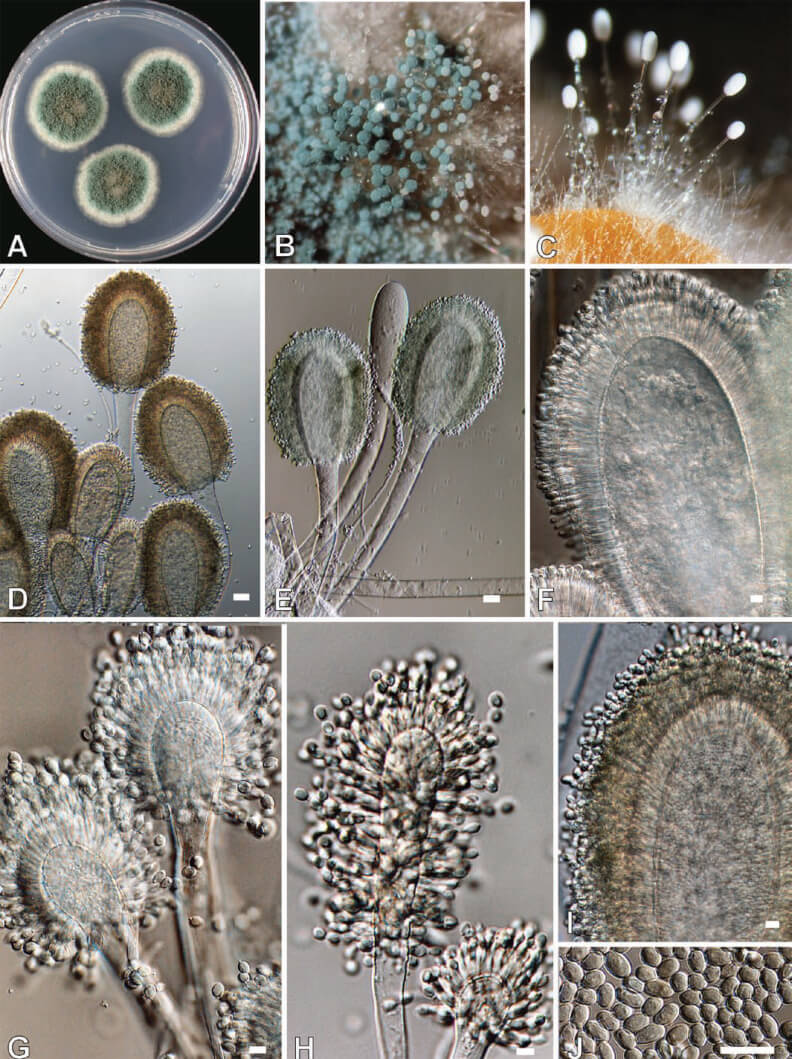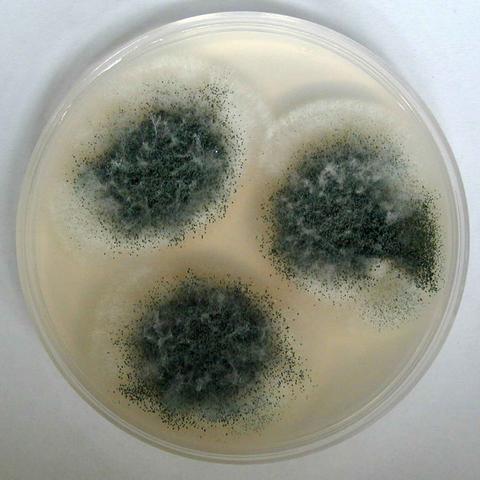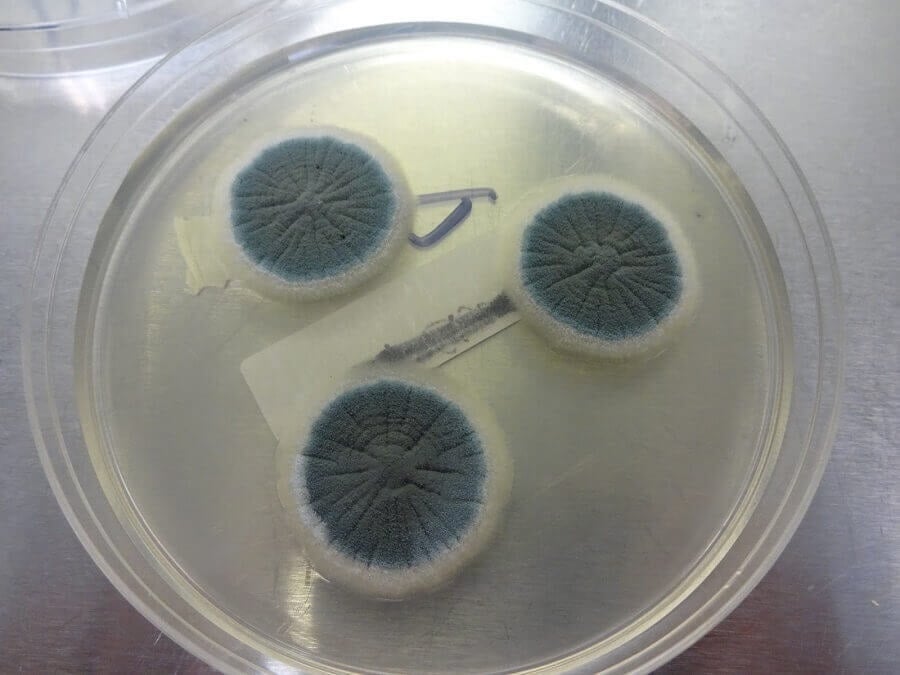Interesting Science Videos
What is Aspergillus clavatus?
Aspergillus clavatus is a pathogenic species of fungi, that produces mycotoxins that cause severe pulmonary disease, an allergic reaction commonly known as malt’s worker’s lung.
- They produce millions of very tiny spores known as conidia, that circulate freely in the air and when inhaled. they cause allergic reactions which may be severe in immune-compromised patients.
- The conidia are produced asexually by sporulation and dispersed into the air.
- Besides the production of poisonous mycotoxins, this mold-like fungus is also known to produce antimicrobial metabolites that are used in pharmaceutical industries.
Habitat of Aspergillus clavatus
- Aspergillus clavatus is a species of Aspergillus group of fungi, that is widely spread in areas of humid environments in temperatures of 25°C.
- They grow in minimum temperatures of up to 5°C and a maximum of at least 42°C.
- It is majorly found in soil and animal manure.
- In soil, they grow and thrive in cultivated soils with barely, potatoes, sugarcane, cotton, and leguminous plants.
- They are also found in wet or moist areas.
- It can also be found in food cereals such as stored rice, corn, millet, and most especially in humid environments.
Morphology of Aspergillus clavatus
- Aspergillus clavatus grown rapidly forming a velvety and fairly dense felt that appears bluish-grey green in color.
- The produce conidia from the conidiophore, which are aligned in a columnar form.
- The conidiophores have a smooth wall, colorless, they have hyaline and the are very long, of about 1.5-3mm in length.
- The conidiophores originate from the specialized and widened hyphal cells.
- The hyphal cells normally brach forming the foot cells
- The conidia have large heads and they are club-shaped; thicker at the apex than the base when they are young, a characteristic called clavated.
- The conidia are very tiny measuring about 3.0 – 4.5 X 2.5 – 3.5 μm
- They have elongated club-shaped vesicles that are also clavated and they have phialides distributed in their whole surface. This makes the vesicle appear short and dense.
- They have a support structure known as the sterigmata which are single row, numerous and crowded.
- The conidia formed in the sterigmata are elliptical, smooth, and thick-walled.
Cultural Characteristics of Aspergillus clavatus
Aspergillus clavatus on Czapek’s solution agar

Figure: Aspergillus clavatus. A. Colonies after 7 d at 25 °C on CYA. B-C. Macro photograph of conidiophores. D-I. Conidiophores. J. Conidia. Scale bars = 10 μm, except D and E = 30 μm. Image Source: https://doi.org/10.3114/sim.2007.59.11.
- Aspergillus clavatus grows rapidly in Czapek’s solution agar producing colonies of 3.0-3.5 cm at 24–26°C in about 8-10 days.
- They produce a plane or slightly furrowed growth with a floccose strain appearance with a thin mycelial surface with erect conidiophores.
- The conidiophores appear colorless but they tur brown with time.
- They tend to be odorless but can be irritating to smell.
- The conidiophore produces large-headed conidia 300 to 400 μm by 150 to 200 μm when young.
- When the conidia mature they split into divergent cordial chains of two or more columns of about 1.00mm long with greenish olive color.
- The conidiophores grow up to 1.5-3mm in length with 20–30 μm in diameter.
- The conidiophores have an enlarged vesicle that is clavated 200 to 250 μm in length and 40–60 μm wide.
Aspergillus clavatus on Malt extract agar
- The morphology of Aspergillus clavatus is different from that of Czaperk’s solution Agar.
- They produce less conidial structures that appear smaller than the normal size.
- The conidiophores appear weakened and very tiny of 300 to 500 μm with columnar heads.
- They produce a strong unpleasant odor.
- The Colonies grow within 6 days after culturing.

Figure: Aspergillus clavatus colony on malt agar. Image Source: Fungi of Great Britain and Ireland.

Figure: Colony of Aspergills clavatus on DG-18 agar. Image Source: Sustainable Mycology.
Life Cycle of Aspergillus clavatus
- They undergo asexual reproduction where the spores (conidia) on the conidiophore disperse into the air and the environment.
- When the spores land on a moist or wet environment of temperatures between 25°C-42°C, the conidia starts to germinate.
- During germination, they septate somatic hyphae, which are elongated and branched.
- The somatic hyphae branches forming germ-tube like elongated structures known as the conidiophore.
- The conidiophore has a thick end known as a vesicle, from which the phialides extend from
- the phialides are responsible for the production of the conidia, which are formed in columns.
- The conidia appear in thick chains from the vesicle phialides each producing conidia spores which disperse into the environment.
Pathogenesis of Aspergillus clavatus
- Aspergillus clavatus is not as pathogenic as other Aspergillus species however it is allergenic.
- It produces millions of tiny spores that circulate in the air and are inhaled by humans and animals without causing disease. But in persons who have mold allergies, they can cause hypersensitivity and in persons with a weakened immune system, they can cause severe pulmonary infections, such as cancer chemotherapy patients, HIV/AIDS patients, Leukemic, organ transplant, and persons with underlying conditions such as Chronic Obstructive Pulmonary Disease (COPD), and Tuberculosis.
- It also produces mycotoxins which can cause serious illnesses.
The clinical manifestations of Aspergillus clavatus include:
Allergic aspergillosis
- This is an IgE hypersensitivity reaction to fungal spores produced by Aspergillus clavatus.
- It occurs due to repeated exposure to conidial spores of Aspergillus clavans.
- After frequent exposure, the body mounts a hypersensitivity immune response that damages the surrounding tissues causing lung diseases, illnesses of the airway, and digestive illnesses when ingested often.
Pulmonary aspergillosis in the lungs which is associated with a spectrum of pulmonary clinical disease with impaired and excessive reactions. It involves an excessive inflammatory response to hyphae colonizing the sinopulmonary tract.
Malt workers’ lungs
- This is an occupational disease caused by frequent exposure to conidial spores in large amounts.
- It affects farmers working with barley plantations.
- Barley releases millions of spores during brewing (malting) and frequent and excessive exposure, causing the Malt worker’s lung disease.
- Symptoms range from acute to sub-acute and occasionally chronic.
- Acute symptoms include coughing, tightening of the chest associated with difficulty breathing.
- Progressive disease is associated with extrinsic allergic alveoli, with fever, chills, malaise, headaches, coughing, difficulty breathing, loss of appetite, loss of weight, malaise. If not treated in this stage, it can lead to Chronic disease which comprises a compromised respiratory system, respiratory distress, hypoxia, body wasting, and at this stage the disease is irreversible.
Nail and skin infections
Patulin toxicity
- It occurs as a result of exposure to mycotoxins produced by Aspergillus clavans.
- Patulin mycotoxin is produced in rotten apples and apple products like juice, apple jams, and apple cider. They can also be found in berries, bananas, plums, and cherries
- Patulin causes gastrointestinal irritation when ingested causing stomach pains, vomiting, and diarrhea that may lead to difficulty in breathing, coughing, and fluid accumulation in the lungs.
- Over poisoning with patulin can cause neurotoxicity causing life-threatening convulsions and neurological deficits.
- Other mycotoxins produced by Aspergillus clavatus include tryptoquivalones that are produced from moldy rice which can cause death in child and cytochalasin E mycotoxin which prevents the formation of blood vessels.
Laboratory Diagnosis of Aspergillus clavatus
Specimens
Sputum, Bronchial wash, bronchoalveolar wash
Culture
- Use of Czapek’s solution agar: it produces a slightly furrowed layer of greenish colonies with distinct morphologies of Aspergillus clavatus.
- Use of Malt extract agar producing a sharp smell of fungal mold with poor morphologies of the fungi including very tiny spores
Microscopic observation
- Use of Transmission electron Microscope to observe the phialide development and conidia formation.
- Use of the Simple electron Microscope shows the continuous wall formed by conidia and phialide
Molecular detection
- DNA analysis of fungal conidia for the quantification of GC-content
Biochemical examination
- Identification of the soluble carbohydrate wall of the conidia which consists of mannitol and arabitol.
Treatment of Aspergillus clavatus diseases
- Treatment depends on the type of illness caused by Aspergillus clavatus. Pulmonary aspergillosis can be treated with itraconazole and amphotericin B.
- Anti-allergens and anti-inflammatory drugs can be used for the treatment of Allergic aspergillosis.
- For the treatment of malt worker’s lung disease, it is hard to treat. use of anti-allergies can reduce coughing and anti-inflammatories such as corticosteroids for serious disease.
Prevention and control of Aspergillus clavatus
- Minimize exposure by removal of all possible causes of mold.
- Use protective clothing such as face masks for barley farmworkers to minimize exposure.
- Treat moist and wet household surfaces with antiseptic solutions to reduce and remove fungal spores especially in homes with immune-compromised patients.
- Consult specialists on the removal of mold.
References and Sources
- https://www.bustmold.com/resources/mold-library/aspergillus-clavatus/
- https://www.ncbi.nlm.nih.gov/pmc/articles/PMC1020442/
- https://err.ersjournals.com/content/23/131/8
- https://www.britannica.com/science/malt-workers-lung
- http://www.biologydiscussion.com/fungi/aspergillus-habitat-reproduction-and-importance-ascomycotina/24000
- https://en.wikipedia.org/wiki/Aspergillus_clavatus
